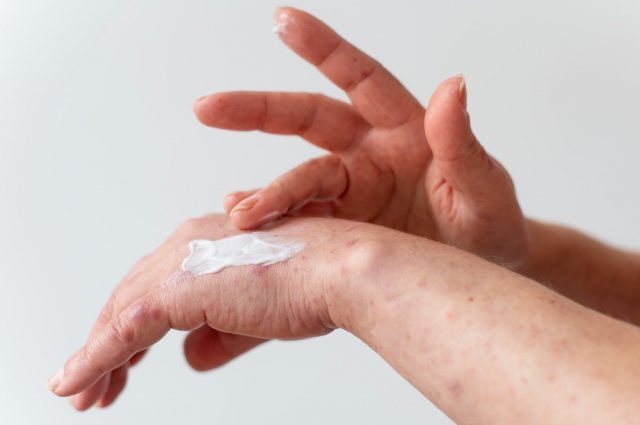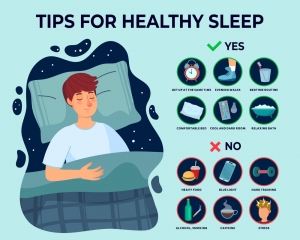Introduction
Hot showers feel soothing on itchy eczema patches, but water temperatures above 38°C strip away natural skin oils and worsen barrier dysfunction within hours. Daily activities trigger inflammation, compromise skin barrier function, and intensify the itch-scratch cycle characteristic of atopic dermatitis.
For those already managing chronic skin concerns, professional eczema treatment in Singapore can complement lifestyle adjustments to improve long-term results. Eczema management extends beyond prescription medications and moisturizers. Daily routines, from morning cleansing to nighttime sleep positions, influence skin barrier integrity and inflammatory responses. Small modifications to these habits often produce noticeable improvements within days to weeks, particularly when combined with appropriate treatment in humid climates.
Cleansing Habits That Damage Skin Barriers
Soap-based cleansers with pH levels above 7.0 disrupt the skin's acid mantle, which normally maintains pH 4.5-5.5 to inhibit bacterial growth and preserve barrier function. Traditional bar soaps reach pH 9-10, creating an alkaline environment that triggers immediate moisture loss and delayed inflammatory responses lasting 12-24 hours after washing.
Cleansing frequency compounds barrier damage when exceeding once daily for body skin. Each wash removes ceramides, cholesterol, and fatty acids that are important for barrier repair. Face washing twice daily remains acceptable using pH-balanced cleansers, but body cleansing beyond daily requirements accelerates trans-epidermal water loss.
Mechanical friction during cleansing causes micro-tears in already compromised eczematous skin. Loofah sponges, washcloths, and exfoliating brushes create microscopic wounds that serve as entry points for irritants and allergens. Even gentle rubbing with bare hands during lathering can trigger mast cell degranulation and histamine release in sensitive areas.
Post-cleansing practices determine barrier recovery rates. Vigorous towel drying removes surface lipids compared to gentle patting motions. The three-minute window following cleansing represents peak absorption time for moisturizers—applying emollients to damp skin increases hydration levels compared to application on completely dry skin.
Clothing and Fabric Choices
Synthetic fabrics trap heat and moisture against the skin, creating conditions that amplify eczema symptoms. Polyester and nylon materials prevent sweat evaporation, raising local skin temperature during normal activities. This temperature increase triggers nerve endings that signal itch sensations, while trapped moisture alters skin pH and promotes bacterial colonization.
Wool fibers, despite being natural, contain protruding scales that mechanically irritate nerve endings in eczematous skin. Direct wool contact triggers immediate itch responses in eczema patients, with symptoms persisting hours after fabric removal. Merino wool with finer fiber diameters causes less irritation but still provokes reactions in highly sensitive individuals.
Fabric softeners and dryer sheets deposit quaternary ammonium compounds onto clothing fibers. These cationic surfactants persist through multiple wash cycles, continuously releasing irritating molecules during wear. Fragrance compounds in fabric products penetrate damaged skin barriers more readily, triggering delayed hypersensitivity reactions appearing 24-48 hours after exposure.
Tight-fitting garments create friction zones at seams, waistbands, and elastic edges. Continuous rubbing generates heat through mechanical action while restricting air circulation needed for temperature regulation. Athletic wear designed for compression increases these effects, particularly problematic during exercise when sweat production peaks.
Environmental Control Mistakes
Indoor heating systems reduce relative humidity during winter months, accelerating moisture loss from eczematous skin. Forced-air heating is particularly problematic, creating air currents that increase evaporative cooling and barrier disruption. Skin hydration measurements show reduction in water content after hours in heated environments with low humidity.
Air conditioning presents different challenges despite providing cooling relief. Standard units remove moisture while cooling, often dropping humidity below optimal range for eczema management. Direct cold air exposure causes rapid temperature fluctuations on skin surfaces, triggering neurogenic inflammation through cold receptors. Filters in unmaintained units harbor dust mites, mold spores, and particulates that become airborne irritants.
Household cleaning products release volatile organic compounds that penetrate compromised skin barriers. Ammonia-based cleaners, bleach solutions, and aerosol sprays create immediate and sustained irritant exposure. Even "natural" cleaners containing citrus oils or essential oils trigger reactions through limonene and linalool content.
Bedding materials accumulate allergens and irritants affecting overnight skin recovery. Standard pillowcases collect facial oils, dead skin cells, and product residues, creating bacterial breeding grounds near facial eczema. Dust mites proliferate in mattresses and pillows in humid environments. Their fecal particles penetrate damaged barriers and trigger IgE-mediated responses.
Dietary Triggers Often Overlooked
Histamine-rich foods provoke eczema flares through non-allergic mechanisms distinct from true food allergies. Aged cheeses, fermented products, cured meats, and leftover proteins contain elevated histamine levels. These compounds trigger mast cell activation and vasodilation, manifesting as facial flushing and increased itch intensity within 30 minutes of consumption.
High glycemic index foods cause insulin spikes that promote inflammatory cytokine production. White rice, refined sugars, and processed snacks correlate with increased eczema severity scores in food diary studies. The inflammatory cascade peaks 2-4 hours post-consumption, often misattributed to other triggers due to the delay.
Acidic foods and beverages alter systemic pH balance, potentially affecting skin barrier function. Citrus fruits, tomatoes, and carbonated drinks cause immediate perioral irritation in eczema patients. Coffee and alcohol act as diuretics, promoting dehydration that manifests as increased skin dryness 6-8 hours after consumption.
Food additives including preservatives, colorings, and flavor enhancers trigger reactions in sensitive individuals. Sulfites in dried fruits and wines, benzoates in soft drinks, and MSG in processed foods represent common culprits. These reactions typically appear as generalized eczema worsening rather than immediate localized responses, complicating identification without systematic elimination trials.
Sleep-Related Factors
Night-time scratching occurs unconsciously during REM sleep phases, causing extensive skin damage before waking. Sleep studies using infrared monitoring reveal eczema patients scratch nightly without awareness. This unconscious scratching generates deeper wounds than conscious scratching due to uninhibited force application.
Elevated bedroom temperatures increase nocturnal itch intensity through peripheral vasodilation and increased nerve sensitivity. Each degree above optimal threshold correlates with measurable increases in scratch duration. Conversely, very low temperatures trigger cold-induced urticaria in susceptible individuals.
Memory foam mattresses and pillows retain body heat, creating localized temperature increases at skin contact points. This heat retention promotes sweating and bacterial growth while preventing normal thermoregulation during sleep cycles. Traditional foam materials off-gas volatile compounds for months after purchase, providing continuous low-level irritant exposure.
Sleep position affects facial and neck eczema through prolonged pressure and friction. Side sleeping creates continuous contact between facial skin and pillowcase materials for 6-8 hours, transferring irritants and allergens directly to affected areas. Stomach sleeping increases neck flexion and fabric contact, aggravating eczema at hairlines and behind ears.
Stress Response Patterns
Psychological stress triggers measurable immunological changes within 30 minutes of stressor exposure. Cortisol elevation initially suppresses inflammation, but chronic elevation leads to glucocorticoid receptor resistance and paradoxical inflammatory increases. Stress-induced neuropeptide release directly activates mast cells, initiating itch-scratch cycles independent of external triggers.
Work-related stress manifests through specific eczema patterns. Computer work involving repetitive hand movements aggravates hand eczema through mechanical friction and contact with keyboard surfaces. Prolonged sitting creates heat and moisture accumulation in flexural areas, while fluorescent office lighting may trigger photosensitive reactions in some patients.
Exercise represents beneficial stress that becomes problematic without proper management. Sweat contains lactate, urea, and sodium chloride that irritate damaged barriers when allowed to remain on skin surfaces. Post-exercise temperature elevation persists 30-60 minutes, extending the period of increased itch sensitivity. Chlorinated pool water strips protective oils while introducing chemical irritants requiring immediate post-swim moisturization.
What Healthcare Professionals Say
Eczema patients often focus exclusively on topical treatments while overlooking daily habits that perpetuate their condition. Clinical examination frequently reveals patterns linking specific behaviors to flare locations—neck eczema from jewelry contact, eyelid involvement from makeup removal techniques, or hand eczema from occupational exposures.
Treatment success requires identifying individual trigger patterns through systematic observation. Keeping a detailed diary for two weeks, documenting activities, products used, and symptom fluctuations, reveals connections patients rarely recognize independently. This information guides targeted interventions that may be more effective than generalized avoidance strategies.
The sequence of skincare application matters as much as product selection. Applying medications before moisturizers reduces penetration, while layering too many products creates occlusion that triggers heat-related flares. Healthcare protocols emphasize proper application techniques that maximize therapeutic benefit while minimizing irritation potential.
Putting This Into Practice
- Switch to syndet (synthetic detergent) cleansers with pH 5.5-6.0, available at most pharmacies as "soap-free" options. Apply cleanser with bare hands using gentle circular motions, limiting body cleansing to once daily unless visibly soiled.
- Install a hygrometer to monitor indoor humidity, maintaining levels between 45-55% using humidifiers during air conditioning use. Clean humidifier tanks weekly with diluted white vinegar to prevent mold growth.
- Replace fabric softeners with white vinegar added to rinse cycles—use half cup per load for softening without chemical residues. Double-rinse all clothing to remove detergent traces.
- Create a sleep environment with room temperature at 18-20°C, using breathable cotton bedding changed twice weekly. Apply thick moisturizer to hands and cover with cotton gloves before sleep to prevent unconscious scratching damage.
- Document personal triggers using smartphone photos of skin changes alongside notes about preceding activities, foods, and stress levels. Review patterns weekly to identify consistent triggers requiring avoidance or modification.
When to Seek Professional Help
- Eczema covering extensive body surface area
- Signs of infection including yellow crusting, increased warmth, or pus formation
- Frequent sleep disruption from itching
- Facial eczema affecting eyelids or lips
- Failure to improve after two weeks of consistent trigger avoidance
- Development of contact sensitivities to previously tolerated products
- Occupational exposures causing persistent hand or facial eczema
Commonly Asked Questions
Can air purifiers help with eczema triggers?
HEPA filters remove particles including dust mite allergens, pet dander, and pollen. Position purifiers in bedrooms where you spend 6-8 hours daily, selecting models with activated carbon filters to capture volatile organic compounds from household products.
How quickly do dietary changes affect eczema?
Elimination of specific trigger foods shows improvement within 3-7 days for immediate hypersensitivity reactions. Histamine reduction through dietary modification typically requires 2-3 weeks for noticeable changes as tissue histamine levels normalize gradually.
Should I avoid all fragranced products?
Fragrance avoidance extends beyond obvious perfumed items to "unscented" products containing masking fragrances. Check ingredient lists for terms like "parfum," "fragrance," or specific compounds like limonene and linalool that require declaration under cosmetic regulations.
Does water hardness affect eczema?
Hard water containing calcium and magnesium ions increases surfactant residue on skin, prolonging irritant contact. Installing shower filters or whole-house softening systems reduces mineral content, though complete elimination remains unnecessary for most patients.
Can pets worsen eczema even without allergies?
Pet saliva and dander create irritant reactions distinct from allergic responses. Regular pet bathing every two weeks and restricting bedroom access reduces exposure without requiring complete avoidance in non-allergic individuals.
Next Steps
Successful eczema management requires systematic identification and modification of personal triggers. Switch to pH-balanced cleansers, maintain indoor humidity levels between 45-55%, and document trigger patterns through detailed symptom tracking for optimal results.
If you are experiencing persistent eczema flares, sleep disruption from itching, or skin infections despite lifestyle modifications, consult a dermatologist for specialized treatment and comprehensive trigger evaluation.






